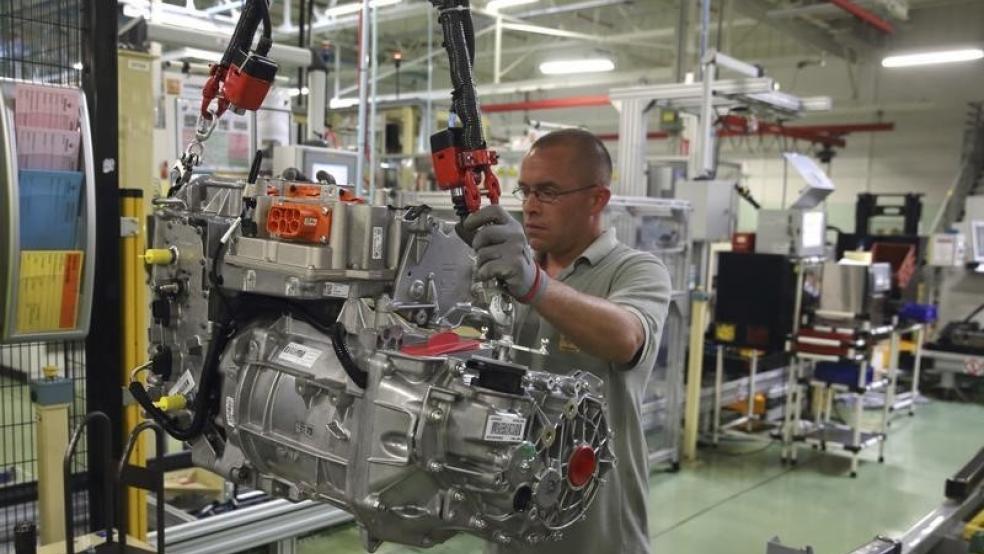The U.S. economy grew at a faster pace than expected in the second quarter, according to data released by the Commerce Department Thursday, dampening fears of an impending slowdown while raising the odds of achieving a “soft landing” in the battle against inflation.
Gross domestic product increased at an annualized rate of 2.8% from April to June, doubling the 1.4% rate recorded in the first quarter of 2024. Economists had expected to see growth closer to 2%.
Consumer spending drove the surprisingly strong results, rising 2.3% during the quarter. “Consumer spending picked up across the board, after slowing in the first quarter,” said KPMG chief economist Diane Swonk. “Big box retailers, who tend to lead the trend for the industry, made a move to roll-back prices to make up on volume what they would lose on margin. The gambit paid off, as consumers came back and boosted their spending on everything from services to goods.”
Inventory buildups also played a role, as did business investment, which rose 5.2%, driven by an 11.6% annual increase in equipment investment. Government spending driven by defense outlays also helped, but residential investment was a drag as high interest rates continued to take a toll on real estate.
President Joe Biden celebrated the good economic news while pointing out the enviable position of the U.S. relative to other advanced economies. “When I took office, we were in the midst of the worst economic crisis since the Great Depression,” he said in a statement. “Today’s GDP report makes clear we now have the strongest economy in the world.”
Biden also linked the results to the policies that he – along with his vice president, now the presumed Democratic nominee – have put in place. “Thanks to my and Vice President Harris’s economic agenda, our economy grew a robust 2.8% over the last quarter, based on strong American consumers and business investment,” he said. “We’ve created nearly 16 million jobs, wages are up, and inflation is coming down. We’re rebuilding the Nation and bringing manufacturing back to America.”
What the experts are saying: Analysts said the report shows an economy that just won’t quit, even as it throttles back from post-pandemic highs. “Economic growth is solid, not too hot and not too cold,” said Chris Rupkey, chief economist at Fwdbonds, per The Washington Post. “The soft patch we had at the beginning of the year has gone away, and with it, the risks of a recession are dying on the vine.”
CNN’s Bryan Mena said the economy is on the verge of a rare achievement: a soft landing, in which the inflation rate is reduced to the Fed’s 2% target level without a recession. Mena says that has happened only once before, in the 1990s.
The strong showing for business investment is a good sign for the future, according to The Washington Post’s Heather Long. “Business investment continues to be really robust. Companies only invest if they are optimistic about the future,” she wrote. “+5.2% non-residential fixed investment in Q2 2024. That's the strongest in a year. Bottom line: Companies believe in the ‘soft landing.’”
That should be good news for the Federal Reserve, which is still seeking solid proof that inflation has been defeated, even as the central bank aims to keep the economy moving forward. Many analysts expect the Fed to start cutting interest rates in September, and the GDP report did little to change that outlook. “This is a perfect report for the Fed, growth during the first half of the year is not too hot, inflation continues to cool and the elusive soft landing scenario looks within reach,” said Olu Sonola of Fitch Ratings in a research note, per Bloomberg.
Joseph Brusuelas, chief economist at RSM, said the latest data is a clear rebuke to critics who are claiming the economy is in trouble. “It’s a truly remarkable economic & policy narrative that should be carefully studied & widely celebrated,” he said on X. “Not sure about you but I’ve had it with the economy is in the ditch crowd. It most decisively is not.”
The bottom line: The U.S. economy continues to outperform both analyst expectations and global peers. Economists say the pace of growth could cool in the second half of the year, but there are few signs of serious trouble ahead.




